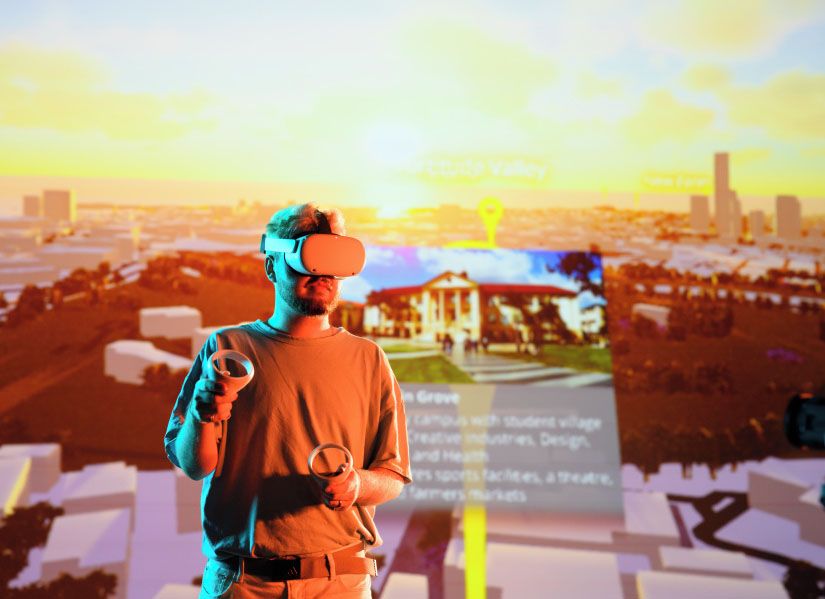
Hi, I’m Darcy. I’m in my 4th year of a Bachelor of Information Technology and Design (Interaction Design) double degree at QUT. Since learning about virtual reality and designing 3D environments in my high school art class, I’ve had a growing fascination with modern technology, rendering technology, virtual reality, and interactive technological experiences and how they go together in our lives.
The course seemed like the perfect cross-section of those things, plus a load of fascinating theory and design practices. I just wanted - more than anything - to be able to insert myself into that field and study the theory behind it and you know, where I fit into that space.
When the opportunity to begin my final year design project came up, I knew that I had to utilise QUT’s modern technology and facilities. I knew that I wanted to do practical projects that could impact the Brisbane community. I also really wanted to get my hands dirty. I wanted to work on projects, I wanted to work with industry people, and I wanted to spend time in the studio designing and drawing. I just wanted to experience all of that.
The work started as an investigation into immersion and presence in virtual reality - what makes virtual reality ‘work’ and what makes it comfortable. I was inspired by existing experiences like Google Earth VR and Half-Life Alyx, which are both ‘staples’ of VR software. For our semester’s brief on ‘ludic design’, I imagined an exploratory experience set in a representation of Brisbane that encourages the user to embark on their journey - or ‘deep dive’ - of the city. Using Unreal Engine, which I had previously used in high school, I began executing this idea. I imported map data from OpenStreetMap using Twinmotion, an architectural visualisation program. I then imported the data into Unreal Engine, giving me a basic layout of the inner streets, buildings, and green areas of Brisbane. Another key visual element was the atmospherics and visual effects, like the physically based rendering of the sky and 3D volumetric clouds. Once the detailing was complete, I worked on the implementation of VR interaction. Using the generic VR template, I added interactive elements such as changing the time of day with a bespoke UI system. In addition, I added landmark information panels that adjust their position based on the user.
My final year design project, River City, wasn’t just any university assignment. The concept of VR immersion in virtual reality is both a mental and physical experience, so my research journey raised so many questions that I had to address before I even began. What convinces your body that what you're seeing is real? How do you make someone comfortable in virtual reality? What kind of techniques are the frontrunners using to convince people that they're in a real place? So, I started by researching immersion in virtual reality and how you can convince someone that what they're seeing is real when it's not. At the end of my research, I discovered that techniques that make people comfortable - like lighting, scale, and sound - are key aspects that create a convincing VR landscape.
Completing the final year design project has been an engaging, insightful, and rewarding experience. Learning the core tenets of designing for people before moving into more specialised technologies like creative coding and tangible media allowed me to explore what felt like extremely new and modern territory.
